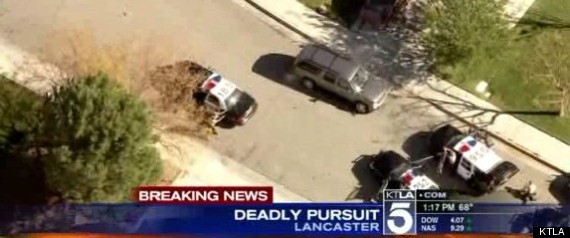During
my time on patrol, I participated in my share of car chases—or “vehicle
pursuits” as we called them in official reports. A typical report contained a meticulous
recitation of every street traveled, every turn negotiated, every stop sign and
red light disregarded. Most often, the
report failed to portray the danger, the urgency, or the chaos of the
chase. Although we were always directed
to “paint a picture in words” for the prosecutor and the courts, our use of legalese—sophisticated
coptalk—usually left the image rather cloudy.
You weren't supposed to write a thrilling novel but a “just the facts”
narrative.

You
want the readers of your novel to visualize your chase clearly. Before you write, it may be helpful to
diagram your chase using one of the many online navigational aids available
such as MapQuest and Google Earth. Following a map lets you establish the
twists and turns of a car chase realistically, even down to which street are
one-ways, which have media strips, and so forth. If your setting is a fictional place, you can
select a locale
and simply change the street names and other landmarks. You don’t want to get too complicated. Two dozen turns becomes boring, especially if
you fail to inject some action.
Keep
your chase scenes simple and intense.
Don’t get bogged down in the minutiae of the event itself. You might consider a break in the action,
where the chase is broken off, giving characters a chance to think or talk, only
to jump the bad guy again and continue the pursuit.
The
story is still about your characters, not the chase. Keep your characters in
character. If your antagonist is the
clever, cunning type, then he should pull some bold stunts during the chase
that help him escape. If your pursuing protagonist
is a cool, calm cop, then he’s not going to hit the high notes as he radios for
assistance from other officers. In a
foot chase, a fortyish, slightly overweight cop will either catch the bad guy
within half a block or it’s over.
Before
you get too crazy with the action scenes like jumping opening drawbridges and
driving through showroom windows, keep in mind that police departments have
very detailed written policies on what can and cannot be done by officers in a
vehicle pursuit. The procedures at my
agency fill twelve pages. For example,
shooting at or ramming a vehicle would be considered deadly force and would
only be justified to prevent imminent loss of life.
Great post, Chief! thanks for the reminder!
ReplyDeleteShared the link to this blog on my FB page Natalie Walters, writer. Thanks for the reminder of what my chase scenes need to include and that realism matters.
ReplyDelete